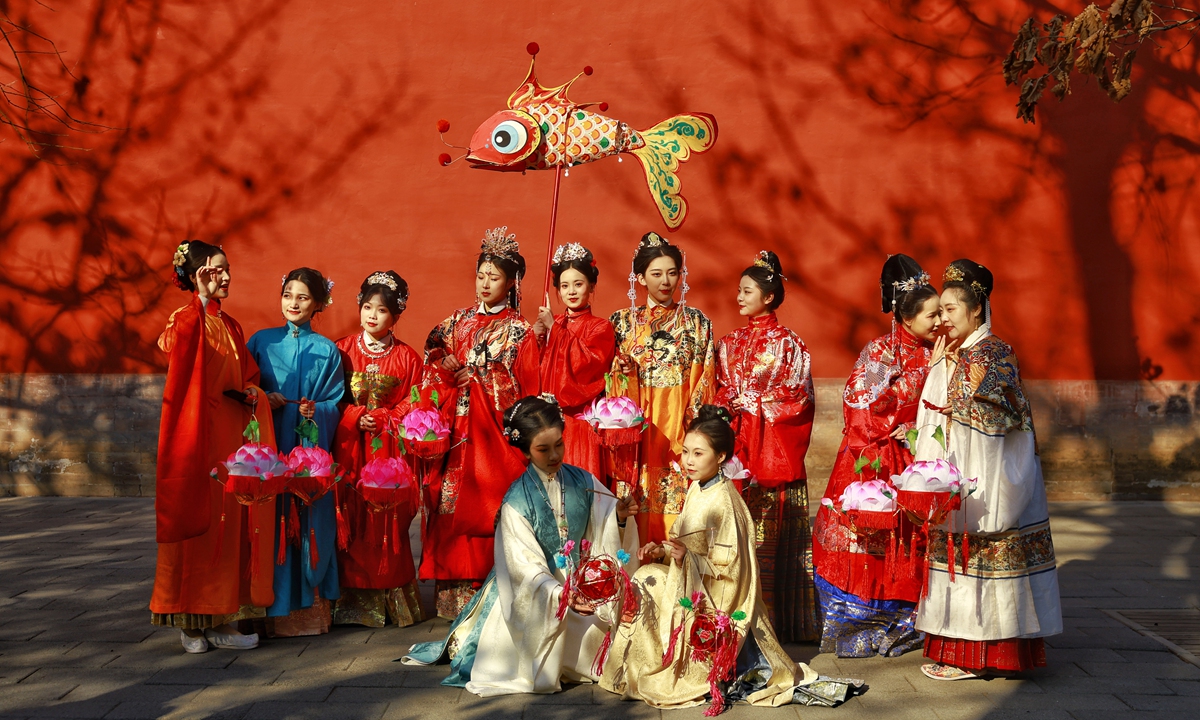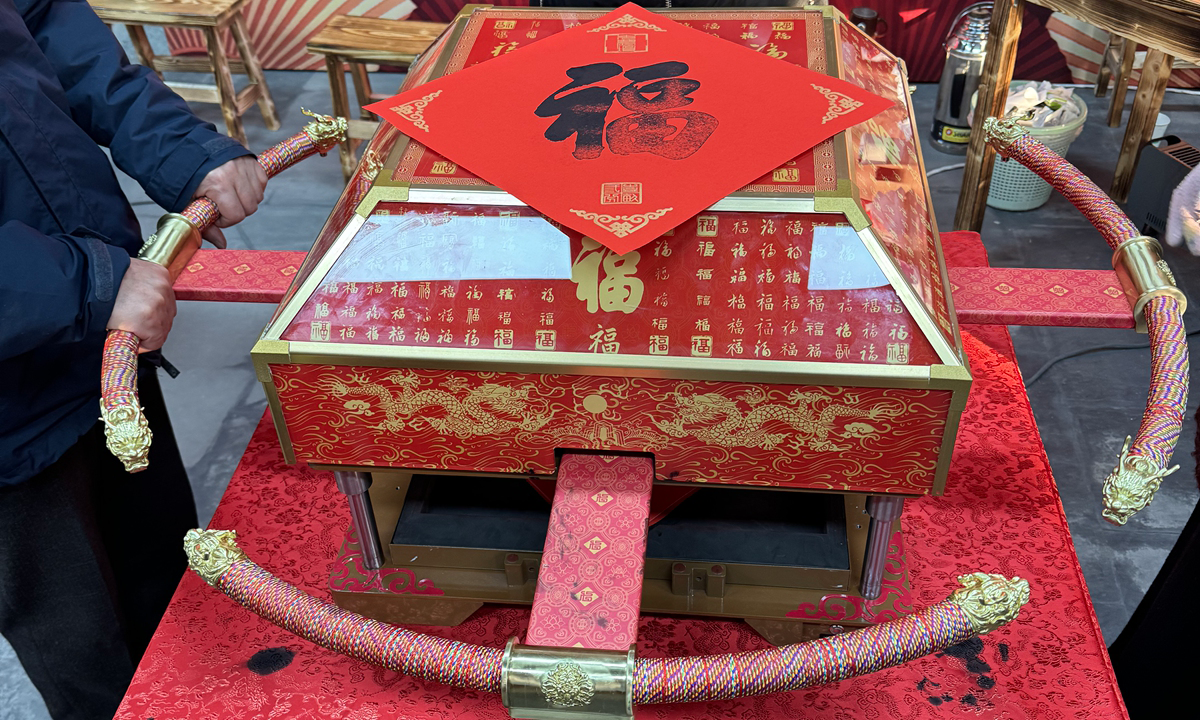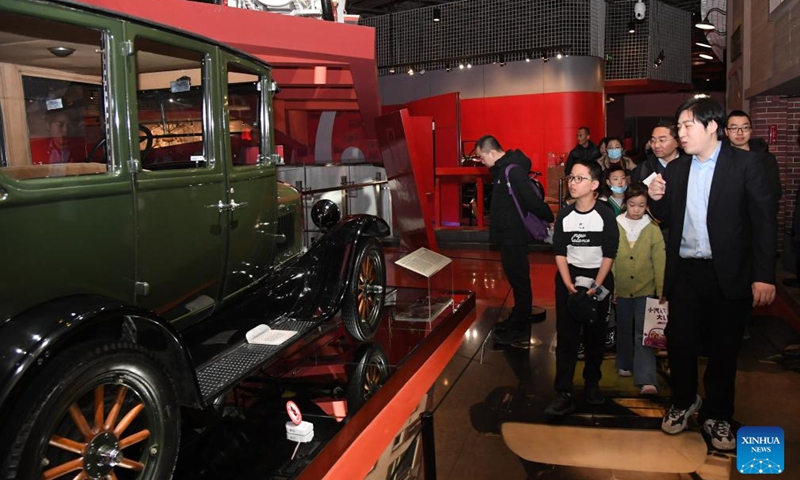
Illustration:Chen Xia/GT
More than a decade ago, whenever the Spring Festival approached, a large number of motorcycles would cross through the border between Guangdong and Guangxi. They were migrant workers in Guangdong. Since the early 1980s, Guangdong, as a pioneer of China's reform and opening-up, has experienced rapid economic development with various types of enterprises blossoming and booming. At the same time, the massive demand for employment has attracted millions of people to work in the Pearl River Delta region. Therefore, over the years, during the Spring Festival travel rush, the number of people traveling from Guangdong to their hometowns in various parts of the country has repeatedly reached record highs.
Data from the transportation department of Guangdong Province in 2022 shows that the number of motorcycle riders traveling through Zhaoqing, Guangdong Province, to and from Guangxi, Guizhou and other provinces has been decreasing significantly year by year since reaching a peak of about 1.1 million vehicles during the 2013 Spring Festival travel rush.
On January 26, the first day of the 2024 Spring Festival travel rush, the rain added a touch of chill to the air. Along the 321 National Road in Foshan Municipality of Guangdong Province, and Wuzhou Municipality of Guangxi, there were hardly any motorcycles on the road, unlike there were many years past. On the nearly 300-kilometer highway, you could occasionally see several migrant workers returning home by motorcycle, most of the license plates showing that they were from the neighboring areas of Guangdong.
In the memories of the staff at a gas station in Zhaoqing, the motorcycles used to come in flocks during the Spring Festival travel rush. In recent years, more and more people though are taking high-speed trains or driving cars rather than riding motorcycles for hundreds of kilometers on their way home. There were a row of small restaurants along the border between Guangdong and Guangxi is on the national road. "Around 10 years ago, each restaurant experienced flourishing business in the run-up to the Spring Festival, and every day, I prepared over 10 baskets of stir-fried noodles, with each basket weighing 50 or 60 pounds," recalled a restaurant owner.
In the early 1980s, with the rapid economic development of coastal areas like Guangdong, tens of millions of migrant workers from Yunnan, Guizhou, Sichuan, and other places rushed to the Pearl River Delta, making it hard to obtain a ticket, especially during the Spring Festival travel rush. But at that time, they could hardly afford other options, so many began to gather in groups of three or five and rode motorbikes on their homecoming journey, eventually forming an amazing phenomenon - the "Motorcycle Army."
The scale of the "Motorcycle Army" peaked in 2013. This period witnessed rising numbers of migrant workers and an advancing economy in China. In other words, the emergence and expansion of the "Motorcycle Army" reflected China's economic and social growth. After 2014, the "Motorcycle Army" began to decrease year by year. For example, at the exit of the National Road 321 in Wuzhou, Guangxi, the number of motorcycles during the Spring Festival travel rush dropped from a record 450,000 to 12,000 in 2022. What are the reasons for its decline?
First, improving infrastructure such as road networks and high-speed railways allows more options for homecoming trips. Besides this, the railway department has been committed to increasing transportation capacity.
Second, the adjustment of the economy and industry has significantly decreased the number of labor-intensive factories, and the income of migrant workers has gradually improved so they can afford to buy larger vehicles or take planes or high-speed trains. During this year's Spring Festival rush, according to data released by the State Council Information Office, up to 80 percent of travelers, representing 7.2 billion trips out of about 9 billion, choose to drive home themselves.
Third, China's population size and structure have changed, with a decrease in the number of young and middle-aged people and an increase in the elderly population. Meanwhile, the number of elderly people returning home has dropped.
Last, the more balanced economic development among regions and rural revitalization have enabled expanding employment in county or rural areas. In addition, people are now used to communicating online and they may also travel more frequently, partly alleviating the urgency of returning home during the rush.
There are still motorcycle teams today. However, many choose this way because they enjoy the ride. As one motorcycle rider said, "We don't rush, and riding a motorcycle is a hobby."
The evolution of the "Motorcycle Army" during the Spring Festival travel rush mirrors the progress of the times.
For over 20 years, it has reflected the different stages of society despite changes in scale. The rise and fall of the "Motorcycle Army" has recorded the advancement of our country, which are precious shots worth cherishing and pondering.
The author is a faculty member with the School of Applied Economics, Renmin University of China. life@globaltimes.com.cn



